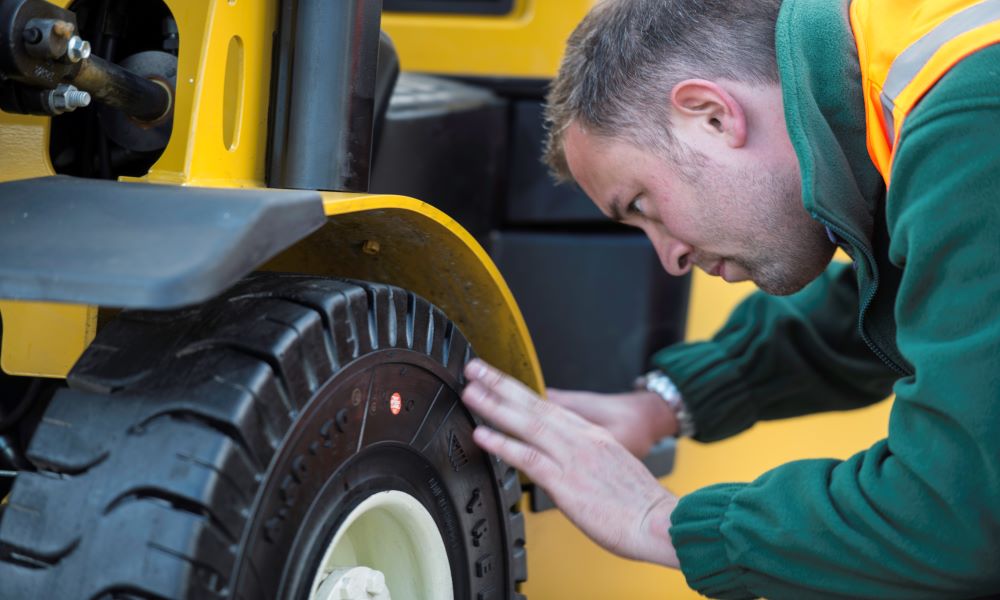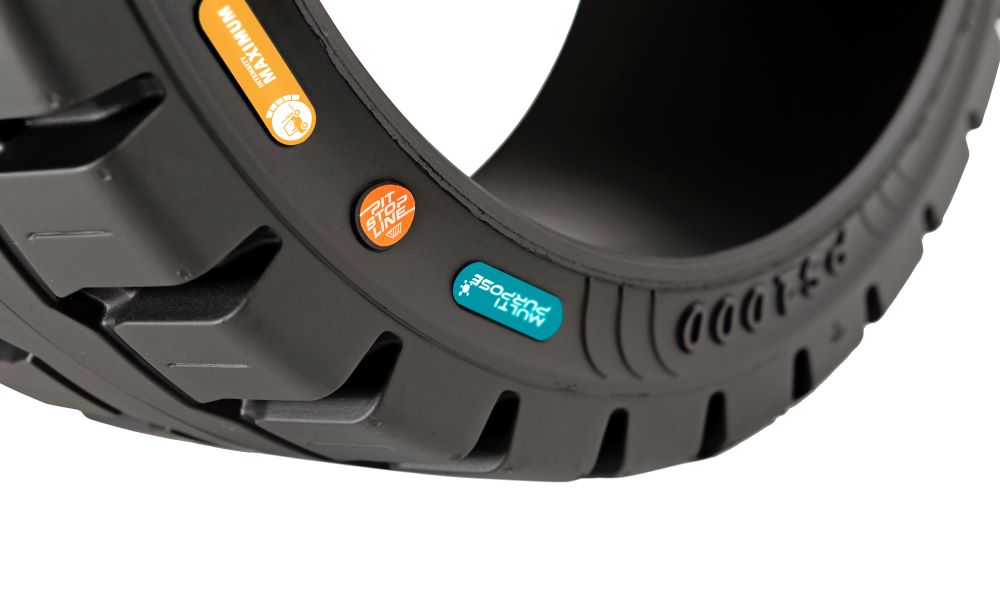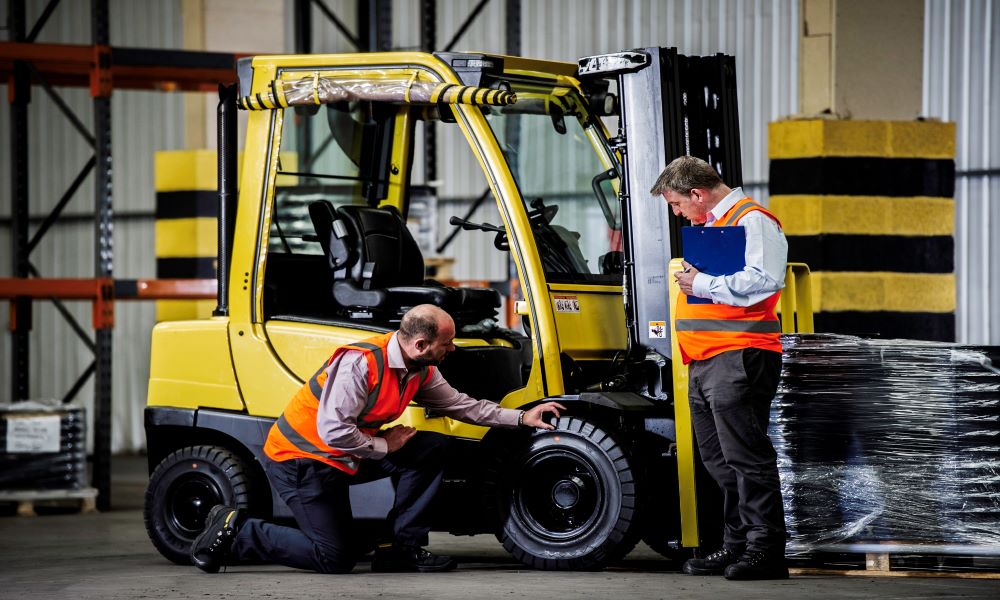Knowing when to replace industrial tyres is critical – replace them too early and you risk spending too much, replace them too late and you risk machine and operator safety. Solving this conundrum was key to the motivation behind the ‘Pit Stop Line’ innovation, which Trelleborg Wheel Systems first launched in the Middle East in 2014 but which continues to be more relevant than ever today.
“Today’s e-commerce industry is moving faster than ever due to supply chain integration, globalisation, and just-in-time methodology,” explains Yasin Seker, Business Development Manager at Trelleborg.
“Warehousing is far more complex and material handling tyres play an important role in maximising the performance and operations of the material handling equipment.”
He continues, “Forklifts keep the Middle East industry moving; almost everything we buy, use, and consume has spent time on a forklift at some point in its lifecycle. It is the responsibility of all of us who are active members of the material handling industry to make safety our top priority.”
With this in mind, the Pit Stop Line was introduced, taking a surprisingly simple but highly effective approach. Today it is available globally on maximum intensity product range solid tyres XP1000, Elite XP, M² and press-on-solid tyres PS1000. As the tyres wear down a highly visible orange band appears on the tyre surface indicating that replacement tyres should be ordered, and service fitting scheduled. When this Pit Stop Line appears on a tyre it will have approximately 100 hours life remaining meaning that replacement tyres can be fitted at the most convenient time.

When Trelleborg began researching this concept the first thing the manufacturer realised was that the majority of forklift tyres are constructed from solid rubber with separate compounds.
“Only the tread layer is designed to safely carry loads. The three compounds look very similar, so as a tyre wears down it’s very difficult for an operator to see if it’s being run on the tread layer or the softer cushion layer,” Seker tells CMME.
“If the tyre is run on the cushion layer, it represents a significant risk to the operator and machine. The cushion layer is not designed to be driven on and the risk is the overall stability of the truck and tyre failure.”
In fact, the cushion layer starts carrying the load at the end of life for a solid tyre, which is represented by the 60J line, a marker put in place by the German Road Licensing Regulation. The 60 Joule represents the minimum working capacity a tyre must have. Driving beyond this line can be highly dangerous because the cushion compound has a higher tear factor due to the lack of carbon black. Depending on the load and speed, driving on the cushion can cause issues such as slippage, rapid wear, chunking or even thermal explosion
Maximum value, maximum uptime
Aside from safety, Trelleborg also knew that there was a recurring problem in the industry of replacing tyres too early, which meant taking forklifts out of service needlessly resulting in potentially large productivity costs in a busy factory or warehouse.
“Typically industrial solid tyres are replaced with 25% of life still remaining as guidelines on industrial tyre safety are not well known. By choosing the Pit Stop Line tyres you always get maximum value for spend,” Seker points out, adding, “by never replacing too early, tyre spend can be reduced by up to 20% over a typical 5-year lease. In addition to this, downtime is reduced and critical machines are kept working.”

Intensity segmentation
Of course, before even replacing the tyre it is critical that the most suitable tyre for a forklift is chosen in the first place. The three main criteria for this include the type of forklift, the area and surface it is operating in and how it is being operated. Maximum intensity applications, for example, require a more durable tyre that can operate around the clock or across two or three shifts a day.
Trelleborg says its newest XP1000 has already become a popular choice for continuous operations on ports, warehouses and shop floors, a key reason being the combination of the Pit Stop Line innovation and its specialised tyre compound which helps provide “maximum performance and minimal waste.”
“Its introduction has allowed our customers move materials around ports, warehouses and shop floors, with optimum traction and minimal vibration to bring greater comfort, increased safety, lower fuel consumption and a longer life; all adding up to more cost effective and sustainable operations that safeguard the planet,” Seker says.
“In fact, side-by-side performance tests reveal that the XP1000 is made to last up to 9% longer with a 21% greater endurance than competitors’ tyres, and a reported increase in comfort level by up to 13%.
“Starting with raw materials and long-lasting reliability of compounds, Trelleborg brings cutting edge technologies to their tyres, so machine operators can concentrate on what they do best”
Different compound, different environment
Trelleborg says it will continue to focus on solid tyre compounding, developing further an expertise that has seen leading manufacturers of forklifts and warehouse equipment such as the KION Group, select Trelleborg Wheel Systems as their preferred main supplier for non-marking tyres in the European market.
The Trelleborg non-marking resilient solid tyres reflect the “different compound, different environment” approach which has seen Trelleborg supply non-marking, anti-static and chemical resistant compounds so new levels of productivity can be reached with the least amount of damage to the surrounding environment.
KION Group, which brings together some of the industry’s leading brands under its roof, has been using the non-marking variation for counterbalanced forklift trucks that operate in demanding indoor environments where floor care is essential. This falls in line with Trelleborg’s greater sustainability strategy. With reduction in waste, raw material and carbon footprint set to become even more relevant in the years ahead, the ever-appropriate Pit Stop Line will continue to be an important part of that strategy too.
